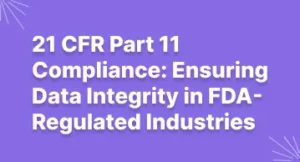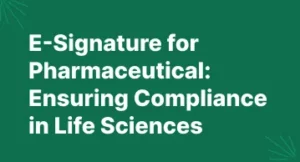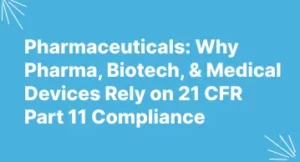Is your Life Sciences Business Ready to Face Coronavirus Disruptions?
The coronavirus pandemic is likely to bring a challenging situation for the business world. Most of the business associations have already started working to mitigate the risks and save their employees and customers. Still, the question of efficient business continuity remains unanswered.
No doubt, COVID-19 will have dreadful after-effects on many business areas especially in the life sciences industry. The reason is, many businesses in the industry are not ready to face the COVID-19 challenges. Resulting which, they are experiencing downfall in their productivity and in their ability to adapt and respond to business processes systematically.
Conducting a quick radar scan of the business processes that are disrupted or are likely to be disrupted by COVID-19 is the need of the hour.
To ease out this process, here’s a quick combination of both the business’s “outside-in” and IT’s “inside-out” disruption questions that you must answer:
“Inside-Out” and “Outside-In” COVID-19 Disruption Questions by Gartner
| Business Function | “Outside-In” COVID-19 Business Disruption Questions | “Inside-Out” COVID-19 IT Disruption Questions |
|---|---|---|
|
Supply Chain
|
Can we inspect raw materials at a different source?
Can we predict the upstream/downstream shortages
and address “panic stockpiling?”
Can we postpone or reschedule production at key production
stages where there is optimal bandwidth on extended shelf and
storage options?
Can we redistribute critical inventory or materials at a
regional and country levels to ensure fast final-mile delivery
in remote/critical need locations?
How do gain visibility into upstream (supplier) and downstream
(customer) disruption or demand spikes?
How do we ensure our supply chain partners (i.e., suppliers,
CMOs, logistics providers) are able to function at necessary
capacities?
What is the response and agility of governments and regulators
to adopt special measures to streamline distribution?
|
What are the IT implications of working remotely for your
supply chain partners?
Which new data sources are on the horizon for
integration?
What supply chain systems will be impacted?
Can we still support product serialization and broader
compliance obligations with current IT systems?
Can we source or inspect raw materials and intermediates at
different locations using current systems ?
|
|
Safety and Serious Adverse Event Reporting
|
How will potential lack of COVID-19 testing impact surveillance
and reporting on active trials?
Can we expect an uptick in adverse events, given COVID-19
concerns among healthcare providers?
Are the effects of our products on a COVID-19 patient clearly
understood?
|
Are existing safety case management capabilities impacted by
COVID-19 containment measures? Do we need to consider moving
this to another provider?
Can our existing case management facility handle any uptick in
case volume? Does this need to be augmented by external
services?
|
|
Regulatory Affairs and Operations
|
Will we be able to support our preregulatory filing meetings in
virtual settings?
Will this impact regulatory submissions? How about agency
review timelines?
Does existing regulatory intelligence capability provide the
means to make informed decisions?
|
What virtual conference tools must be in place to enable
uninterrupted regulatory affairs operations?
What remote and virtual meeting tools are needed to ensure
continued operation of submission processes?
Do regulatory country and regional affiliates have the tools
needed to continue uninterrupted operations?
Do central regulatory decision makers have the regulatory
intelligence tools required?
|
|
Quality
|
Will we still be able to access our quality systems in
remote-fashion? From any device? How does this vary with respect
to on-premises vs. cloud deployments?
Will we be able to update our procedures and other quality
documents? Measurement capability? Tracking?
What is the regulatory agency approach to inspections during
the crisis? Can such inspections be supported remotely?
|
Are current quality IT systems impacted?
What is the impact on current QMS and quality documentation
processes like witnessing batches, signatures in notebooks and
visual inspection capabilities?
What, if any, impact exists with respect to QMS integration
with other business systems or production equipment?
Do deviation and quality management systems support tagging
COVID-19 issues for visibility?
|
|
Product Design/Medical Device
|
Can product engineers continue to collaborate and annotate
drawings with nonengineering teams?
Can we amend our policy for accessing sensitive prototype
information from home?
|
Are the virtualized CAD and CAE viewers adequate for your
remote product development?
Can existing PLM support the work processes?
Can nonengineers print and provide feedback for key drawings
during reviews?
Which digital rights and permissions are impacted? Do you have
product or design datasets that cannot be accessed?
|
|
Manufacturing
|
Can we operate manufacturing lines or MES components remotely?
With less staff?
Can we amend the LMS content in the workflow and continue
compliant equipment operation?
Do we have IT support for alternative manufacturing logistics
partners?
|
Are the current suppliers and partners able to provide services
and ongoing work?
Do the MES and EBR systems still function under new workloads
and GMP environments?
Which suppliers are your alternatives? What is needed from an
IT perspective?
|
|
Laboratories
|
Is there anyway for us to access instrument files and
laboratory operations from home?
Can we still log into our lab informatics systems (ELN, LIMS,
CDS, etc.)?
Can we get a snapshot of our time-sensitive reagents and
logistics status?
Are asset maintenance and calibration schedules going to be
delayed? What about outsourced lab IT partners?
|
Do we have a policy that allows for specialized on-site
work?
Do we need to change our software licenses? Support
model?
Which systems are GLP vs. non-GLP?
Do our workflows require bridge systems? Can it work in
existing ELN, LIMS and CDS?
Which systems cannot be moved to the cloud for compliance, GxP
or regulatory reasons?
|
|
Early Research and Drug Discovery
|
What is the impact of scientific meetings and industry event
cancellations on innovation, projects, milestones and
collaboration?
Will our scientific applications (such as bioinformatics and
molecular modeling tools) work from home?
|
Which key applications and informatics datasets need to be
accessible remotely?
Which scientific workflows are impacted by employee
location?
Do we have the right types of software licenses to support
remote work?
|
|
Commercial Operations
|
How will we maintain open lines of communications with
healthcare professionals?
How can we align our processes and content to ensure
coordinated messages across the organization?
How can we deliver effective training on our products and sales
strategies? And collaborate on our strategic customer
discussions?
|
In the short term, how can we leverage remote engagement
capabilities while ensuring compliance with CRM processes?
Do we need to accelerate our content development and approval
processes to deliver personalized content? In the short term,
how can sales representatives assist in orchestrating
personalizing messages to physicians?
How can we leverage virtual technologies to enable peer to peer
physician education?
Do new mobile apps, digital engagement tools, such as chatbots
and voice assistants, need to be rapidly augmented or
accelerated?
What virtual training solutions must be in place to enable
uninterrupted sales training?
|
|
Clinical Development
|
How does COVID-19 impact our recruitment, retention, and site
startup activities?
How shall we manage the uptick in patients’ missing visits,
dropping out, and resulting additional protocol
deviations?
How will global clinical supply chain and logistics be
disrupted during the crisis?
What if subjects cannot get to their sites? For example, what
if they cannot take commercial flights due to government travel
restrictions?
What about trial delays due to lack of site commitment,
resources, staff, and reprioritization?
What will be the impact of missed subject visits, treatment,
and trial procedures to protocol endpoints?
|
Do current eClinical systems support remote access for ongoing
trials in the short term? Do they enable virtual subject,
investigator, and monitoring visits?
If virtual subject, investigator, and monitoring visits cannot
be managed in the short term, can IT provide these capabilities
on future trials?
In the event of supply disruption, do trial supply management
systems provide the forecasting and visibility to ensure supply
management and rerouting as needed?
Does IT support capabilities to expand recruitment using new
technology approaches with AI and real world data?
Do IT initiatives support patient engagement on trials for
better retention, medication adherence, communication, consent,
training and scheduling?
Does your IT strategy include digital and decentralized trials
as a longer term goal?
|
Once you have the answers to these questions, assess and prioritize short-, mid- and long-term plans. This will help your pharma business create the best possible resolutions to eliminate the extremely dynamic situation. For instance:
- Short-term plans include all the critical or instant IT responses for the business. These should be now considered as ongoing “emergency” activities.
- Mid-term plans include activities that need to be ready for when the COVID-19 pandemic begins to ease.
- Long term plans include activities that need to be ready to address the post-COVID-19 situation.
Make sure to keep these plans dynamic as the end of COVID-19 pandemic is unpredictable till now. In the midst of all the disruptions caused by COVID-19 in the life sciences industry, MSB Docs came forward as a savior. Here’s how MSB Docs covered them all!





